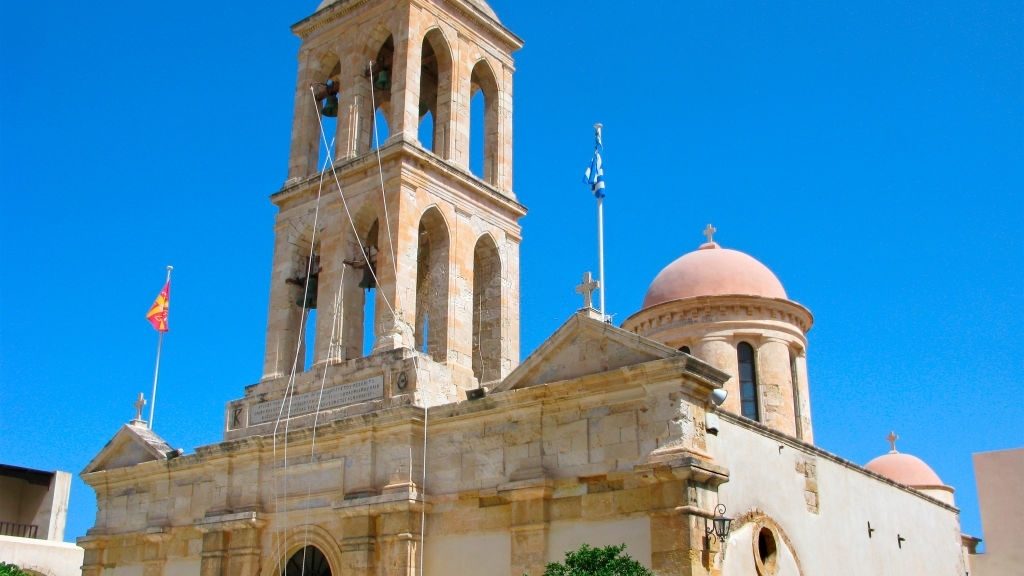
Klasztor Hodegetria
Hodegetria Monastery is one of the oldest and grandest monasteries on Crete, with its history closely linked to that of small monasteries and hermitages in the Asterousia region.
This region has always been an important centre of hermitage and is often regarded as the Agio Oros z Kreta, due to the secluded and inaccessible landscape. Hodegetria is a citadel-type monastery, with a large fortified tower in its courtyard that protected the monks from pirates arriving by sea in the south. According to tradition, this tower was initially built by Nikiforos Fokas in 961 AD. However, the present-day tower was built at the site of the first one during the era of Venetian rule but retains many of its Byzantine characteristics. The two-aisled church at the centre of the courtyard is dedicated to the Dziewica Maryja i Święci Apostołowie.
Several additions have been made to the initial structure and its interior includes murals, icons by renowned painters, an artful chancel screen and important holy vestments. During the era of Ottoman rule, the monastery served as the seat and refuge of revolutionaries and its history has been linked with Xopateras, a dynamic monk who fought the Ottomans when they laid siege to the monastery on his own. After the Otomany killed him, they set fire to the tower and destroyed the monastery. The monastery includes wonderful 15th-century icons by the painter Angelos, such as the Życiodajna czcionka oraz Saint Fanourios, while the murals of the chapels and nearby churches, which are also worthy of note, were painted during various eras. On-site, there is a small museum with an old oil press, a stone oven, old farming tools, a wine press and other utensils.
The distance both from Rethymno oraz Heraklion is about 80 km. Afterwards, visitors can enjoy a swim on the nearby beaches of Matala, Kokkini Ammoslub Kommos, the options are endless!
Godziny odwiedzin/informacje
Tel.: (+30) 2892042364
Należy pamiętać, że wejście na teren klasztoru wymaga zakrycia ramion i nóg. Stroje kąpielowe, podkoszulki i szorty lub krótkie spódniczki nie są dozwolone. Do okrycia się można użyć luźnej chusty lub ręcznika.